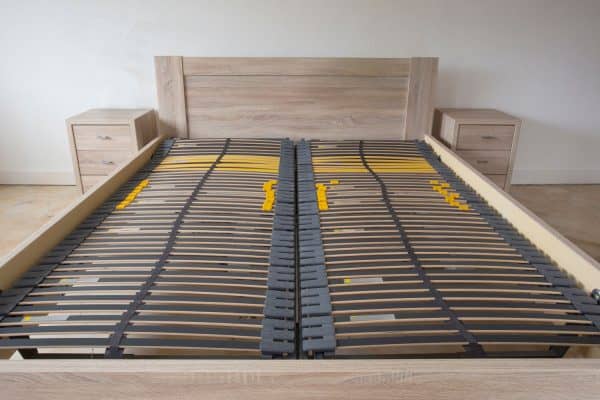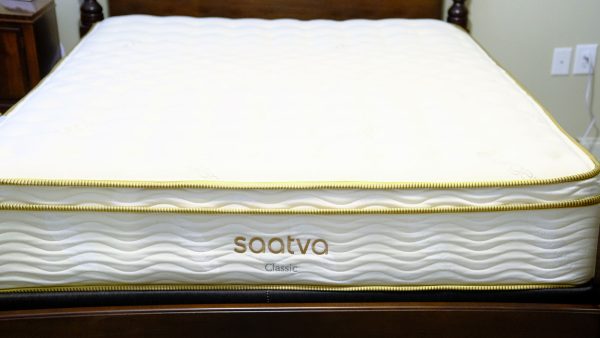There could be a number of reasons that might lead you to ask yourself the question, "How long does this down pillow actually last?" Maybe your neck is stiff, you’re not sleeping as well, or you're alarmed to find out that you can’t actually remember when you purchased it. Good news! We’ve researched how long down pillows last to help you determine whether your pillow could use refreshing or replacing.
Down and other feather pillows are very durable. Generally, these pillows will last anywhere from 5 to 10 years because they can be washed regularly. To ensure the best lifespan, be sure to wash down pillows at least once every six months.
Depending on your pillow's filling material and how you maintain it, you can achieve a down pillow's maximum longevity. In this article, you will find some answers to the most commonly asked questions surrounding how to select down pillows and their care. So, please keep reading as we take a closer look!

Types of Pillows
Pillows are often underappreciated. They are the basis - along with your mattress, of course - of restful sleep. Ensuring that you select the proper pillow and understanding how to care for that pillow will allow you to get the most out of the money invested and ensure that you wake rested.
It’s good first to know the different types of pillows. Down/feather, synthetic, and foam are typical pillow materials. Often, people will use “down” and “feather” interchangeably, but they are a bit different from one another. It is important to understand these differences and how this compares to the longevity of synthetic and foam pillows.
Down pillows
Down pillows are made with down feather clusters from the chest of a goose or a duck. You could compare these little clusters to that of a cluster of cotton, or perhaps the white dandelion seeds after a strong breeze blows. When placing your head to rest on this kind of pillow, you may feel like you are in the clouds resting your head softly. Because of the soft density of these types of feather clusters, you will notice that the pillow will condense over time.
A down pillow is the portrait of luxury, and often the price point matches. These pillows are soft but durable, and with that durability comes a long lifespan if cared for properly. You can expect that these materials will hold up for between 5 to 10 years if you regularly wash, fluff to keep the shape and support, keep moisture to a minimum, and don’t skimp when purchasing. You get the quality that you pay for.
We may include affiliate links and curated AI content to highlight top design styles.
Click here to see these Premium Goose Down Pillows on Amazon.
Feather pillows
Feather pillows are made from the feathers on the wings of a duck or a goose. Each of these feathers has a quill, so with time and use, improper care can cause the quills to poke through the pillowcase. Using a thick pillowcase or a pillow protector can help you prevent or minimize this outcome.
Feather pillows are often combined with down to increase their softness and desirability. Feather-only pillows can fall flat quickly as the quills align. Like down, feather (or feather/down) pillows are very durable. Keeping moisture out, fluffing, picking quality materials, and washing regularly can allow these pillows to last between 5 and 10 years, or longer.
Click here to see these SureGuard Pillow Protectors on Amazon.
Synthetic pillows
Synthetic pillows are made of polyester or fiberfill. They will feel similar to a down or feather pillow, but since the fill is synthetic, it is a good hypoallergenic alternative when down pillows are not an option. When a synthetic pillow begins to lose its shape, go flat, or becomes lumpy, it is a clear indication that it is time to replace it. You’ll notice that these types of pillows do not “fluff” like natural down or feather pillows do. As a good general rule, these pillows, with proper care, will last between 1 and 2 years.
Click here to check out these Hotel Sleeping Bed Synthetic Down Alternative pillows on Amazon.
Foam pillows
Foam pillows are made out of small clumps of memory foam. Memory foam is best known for being firm initially but then slowly softening over time. It does this by molding to your head with pressure and the heat your body gives off. Memory foam offers more structural support, and often this makes for a good neck pillow or knee pillow. Largely due to preference, quality of the foam, and the pillow's use, it is difficult to place a specific number to its longevity. When the pillow becomes too hard for comfort, it is time to replace it. Typically this will fall between 1 to 1.5 years of continual use.
Click here to see this Wondersleep Dream Rite Shredded Hypoallergenic Memory foam pillow on Amazon.
Is duck or goose down better for pillows?
In terms of “fill power” (the measure of the size of an individual cluster of down, it’s fluffiness, and its ability to insulate the heat), goose down has a higher than average rating. Because geese are bigger than ducks, goose down makes pillows more robust, fluffier, and potentially longer-lasting. However, if you prefer a denser or thinner pillow, choosing to go with duck down will be the better bet.
What should I look for in a down pillow?
To select the proper down pillow, you need to be sure to choose the right level of firmness. These pillows come in standard fill sizes: extra soft, soft, medium, firm, and overstuffed. Which one you select will depend on your sleeping preference (such as side sleeper, back sleeper, or stomach sleeper).
Next, you want to ensure you’ve chosen the correct fill for your pillow. You can opt for down, feather, or a combination. Different companies will offer different selections for you to choose from.
Understand that you can add or remove down/feathers as time goes on to find the perfect fill level. This can help add a little something to an extra soft pillow or remove just enough from an overstuffed pillow. Keep in mind, down pillows will get softer with use.
What to do with old down pillows?
When you’re finished using your down pillows, there is a myriad of things that can be done with them. To name a few:
- Reupholster them and use them as throw pillows for other areas of your home or even your outdoor space. Check out "3 Reasons To Add Throw Pillows To Your Accent Chairs!"
- Combine a few of them and add a decorative cover to create some floor seating or for a down-style bean bag.
- Repurpose into a pet bed.
- Donate them to an animal shelter.
- Use the feather fill as fertilizer or compost.
- And the shell of the pillow for rags or as homemade rag curlers.
- Use as packing material for fragile items.
- Repurpose as door draft stoppers.
- Use them to kneel on for other projects around the house or in the garden.
How do you make down pillows fluffy again?
There are a few ways you can fluff up a down or feather pillow. To fluff by hand, you’ll want to knead and punch the pillow to break up the material and allow better airflow. Do this on the top and the bottom seams, and the side seams. Flip it over and repeat the same steps for about 30-seconds on each side.
To fluff by using the dryer on a low heat setting, place the pillow inside the dryer with some kind of dryer ball (a tennis ball or a homemade dryer ball would work too). This will pound on the pillow as it goes around in the dryer to break up the fill and let the airflow better. Sometimes you’ll have to let this go for a few cycles to get the optimal fluffiness.
Can you wash down pillows (and how)?
Yes! You can, and should, wash your down pillows. The frequency will vary with the type and brand of pillow that you’re working with, but generally, you should be washing them at least once every three to six months. This will remove mold, bacteria, and other odors. Make sure you read the tag on your pillow to ensure that it doesn’t specify dry clean only.
If possible, use a front-loading washer to help maintain fluffiness. Be sure to set the machine on the gentlest cycle, and use warm (not hot) water. Use a good quality detergent that does not leave a residue. Rinse thoroughly, even if you need to repeat the rinse cycle.
Once your pillow is washed, you’ll need to dry it. The majority of down pillows can go in a dryer, though you’ll just want to double-check the tag to make sure. Some pillows (such as foam) cannot go in the dryer, or they could melt. On a low heat setting, put your pillow, along with a dryer ball, into the dryer and allow it to go through a dry cycle. You may need to remove the pillow, fluff, and repeat to ensure that the pillow is completely dried. Leaving any moisture in the pillow fill can create mold growth.
Also, be sure to check out "How To Wash Throw Pillows [5 Easy Steps]!"
Summary
Not only are down pillows an extremely comfortable, luxurious, and durable option for your pillow choice, they are also easy to maintain and have many great alternative uses. Select yours with care, and soon you'll be dreaming on your cloud nine (down pillow cloud nine, that is).






